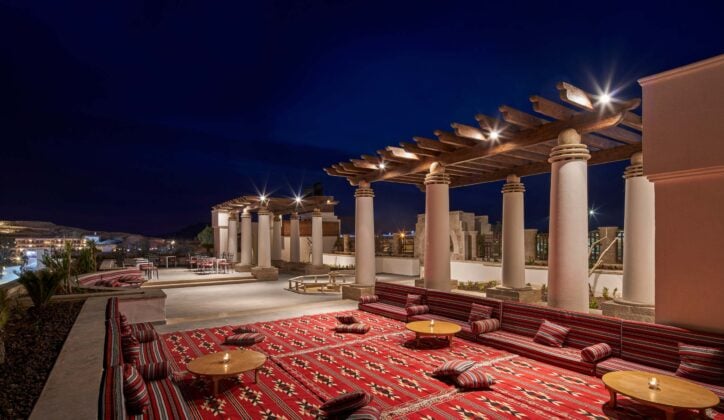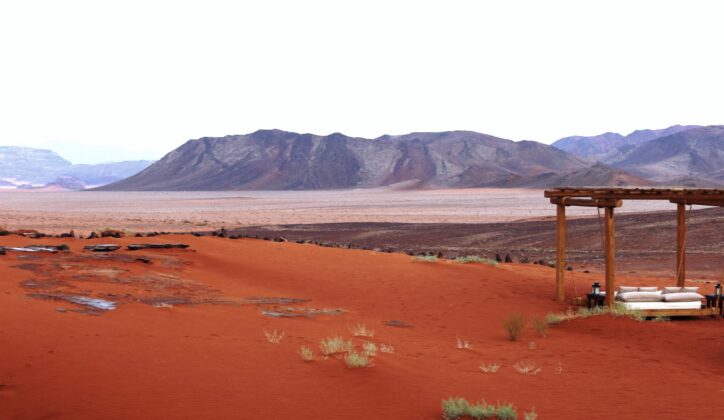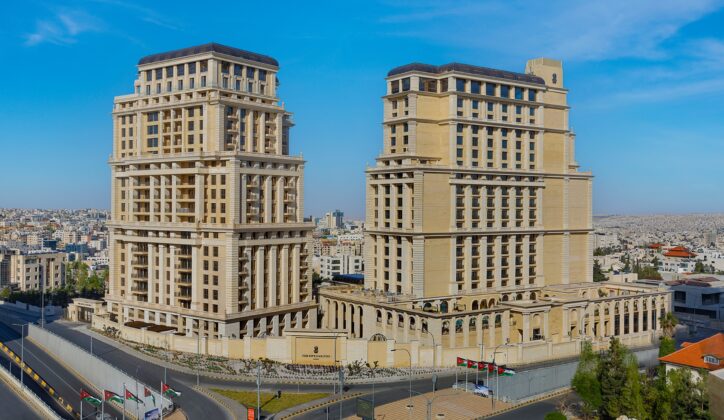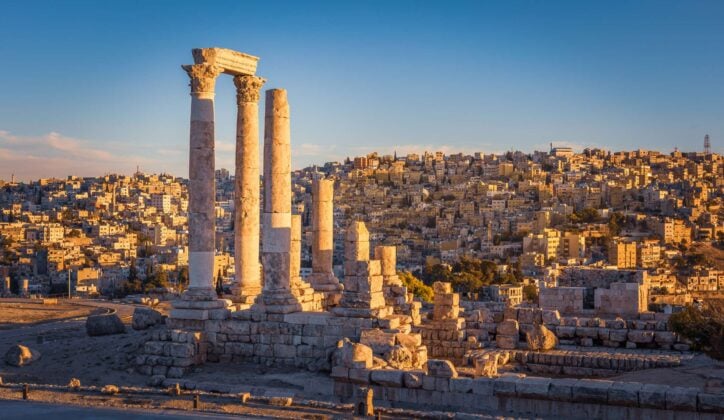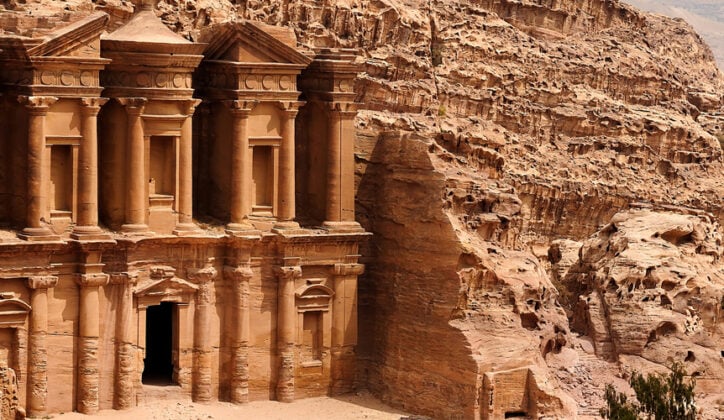Published on: September 19th, 2023
Last modified: December 28th, 2023
The best time to visit Jordan is during the cooler months: March to May and September to November. Avoiding the scorching summer (June to August) and enjoying temperatures between 18°C (64.4°F) and 28°C (82.4°F), perfect for sightseeing in Amman, Jeep safaris in Wadi Rum's desert landscapes and discovering iconic Petra.
While Jordan is often linked with extreme desert heat, the winter months (December - February) see temperatures drop below 0°C (32 °F). Amman and Petra, being elevated, even witness snowfall, while nights in Wadi Rum are freezing. Despite the chill, the off-peak season presents an excellent opportunity to explore Jordan without the crowds.
Jordan Month-by-Month Weather Guide
Jordan is primarily a dry desert country but its climate varies across different months. The scorching summer months from June to August stand in stark contrast to the freezing winter temperatures of November to February. Each month sees a shift in weather, which can impact the places to visit and things you can do in Jordan.
To help you understand the weather in detail, we’ve compiled a helpful month-by-month climate guide for Jordan.
Jordan in January
Best for winter temperatures
January is the coldest month to visit Jordan. The lowest temperature ever recorded was -7.6°C (18.32°F) in 2008. Although extreme lows like this are rare, Amman and Petra feel chilly in January, with days dropping to around 12°C (53.6°F) and in Wadi Rum, temperatures plunge below 0°C (32°F) at night.
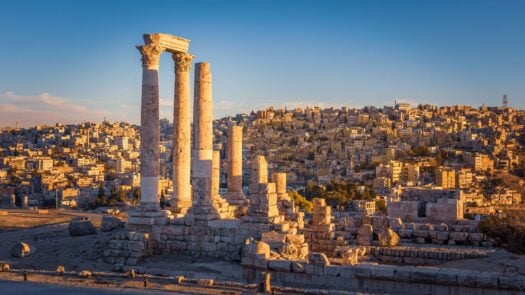
Jordan in February
Best winter month for visiting Petra
February is a winter month in Jordan and experiences some of the highest rainfall, mainly in Amman. Around 38.1 and 83.82 millimetres of rain falls in February with temperatures close to 13°C (55.4°F) during the day. In Petra things are starting to get slightly warmer, reaching 15°C (59°F) by midday.
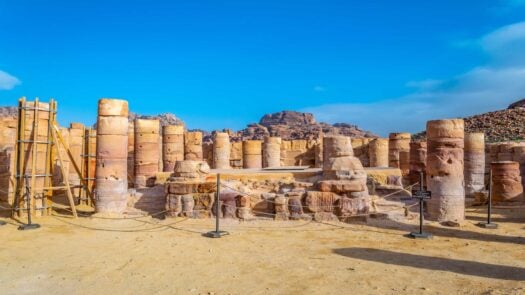
Jordan in March
Best for the spring and warmer weather
March marks the start of spring and is one of the best times to go to Jordan for warmer temperatures, pretty spring flowers and fewer crowds. Temperatures are starting to creep up with highs of 17°C (63°F ) in Amman, 18°C ( 64°F) in Petra and coastal Aqaba is now balmy at 24°C (75°F).
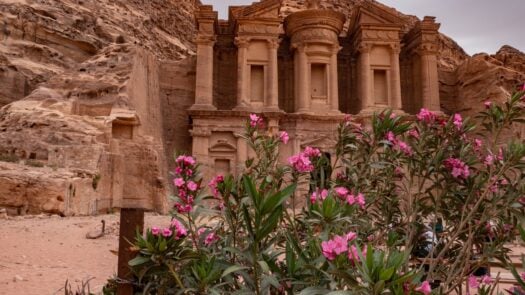
Jordan in April
Best for spring flowers
April is a beautiful spring month to visit Jordan as temperatures are warm, but not too hot for sightseeing in Jerash, Petra and around Mount Nebo. At the Dead Sea the water temperatures now average 23°C (73.4°F) and in the nearby Dana Biosphere you can hike surrounded by lush landscapes.
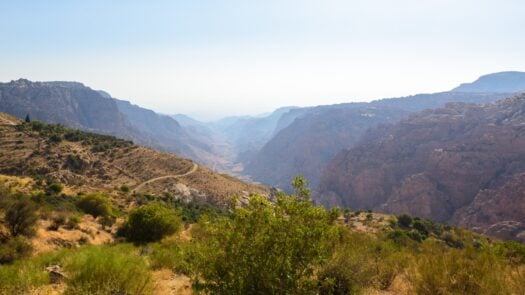
Jordan in May
Best for warm weather
The mercury rises in May, making this one of the best months to go to Jordan for balmy days and the start of the warmer evenings in Amman, Petra and Wadi Rum. In Aqaba and the Dead Sea it’s starting to feel very hot with temperatures already into the mid 30’s °C (90’s°F).
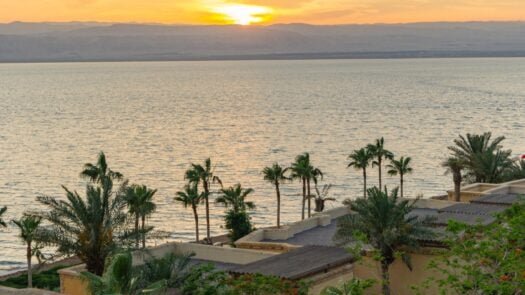
Jordan in June
Best for hot temperatures with comfortable dry heat
June is the start of summer and a great month to visit Jordan if you enjoy warm weather. Amman now feels hot during the day, reaching 30°C (86°F). However, the Jordanian highlands, including Mount Nebo and Petra, still experience chilly nights, meaning you’ll need an extra layer for an early morning excursion.
It’s worth noting that although June is summertime in Jordan, it’s a cooler month than July and August. This means that June can be a great time to visit Jordan for a ‘cooler’ summer experience.
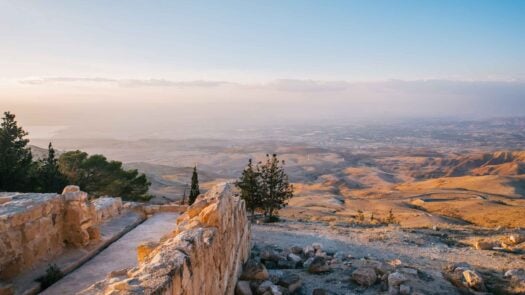
Jordan in July - August
Best for stargazing in Wadi Rum
July and August are the hottest months to visit Jordan. Amman, in the cooler north, typically stays below 35°C (95°F), however the low lying Dead Sea easily peaks at 40°C (104°F). The slightly elevated Wadi Rum, stays a little cooler at 34°C (93.2°F), although there’s little respite from the intense sun.
Although very hot at this time of year there are still plenty of reasons to go to Jordan in July and August. Clear skies mean stunning stargazing opportunities in Wadi Rum and the climate is dry, which is generally more comfortable for sightseeing and activities than a humid heat. Our top tip is start your day early, pack a good sun hat, drink plenty of water and seek shade as often as possible.

Jordan in September
The start of cooler temperatures
September marks the start of autumn, however the intense heat of summer remains. Expect over 37°C (98.6°F) at the Dead Sea and Aqaba and a balmy 30°C (86°F) in Amman. September is the best month to visit Jordan for warm weather that’s manageable enough for enjoyable sightseeing at Petra and Jerash.
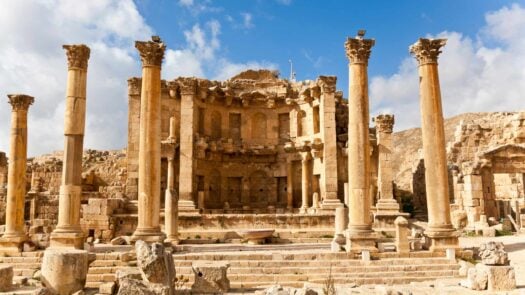
Jordan in October
Best for sightseeing
October is widely regarded as the best month to visit Jordan. Sunny days, clear skies and temperatures that are warm, rather than hot are perfect for sightseeing, hiking and activities in Wadi Rum. Petra and Amman peak at 27°C (80.6°F) while the Dead Sea and Aqaba are warmest at 33°C (91.4°F).
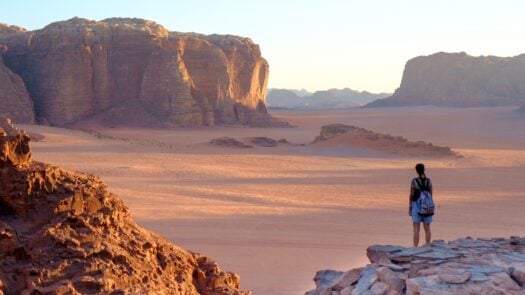
Jordan in November
Best for skipping the crowds
November is one of Jordan’s cooler months. Despite cold evenings and the possibility of rain towards the end of the month, November is still one of the best months to visit Jordan. Both Petra and Amman experience daytime highs of 20°C (68°F) and the Dead Sea is hot at 29°C (84.2°F).
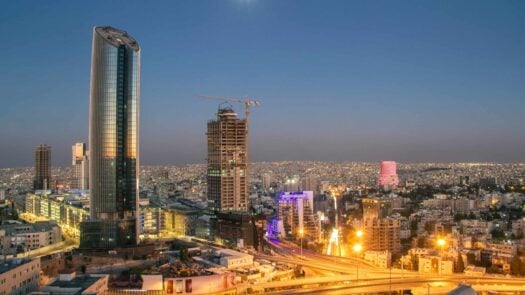
Jordan in December
Best for beating the heat and quiet sightseeing
December sees a sharp drop in temperatures with cold winds, rainfall and even snowfall possible in Amman. However, so long as you’re prepared, December is a good month to visit Jordan. There are no crowds at Petra and Jerash and the midday sunshine brings a welcome warmth. Expect highs of 15°C (59°F) in Petra.
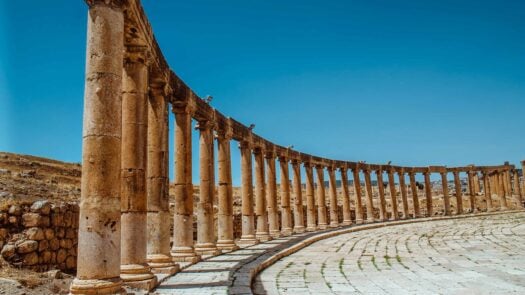
The Best Things to Do in Jordan by Season
Choosing the best time to visit Jordan will depend on your own interests. Certain times of year are best for particular things to do. To help you decide the best time to go to Jordan for your trip, we’ve completed a list of the best things to do in Jordan, and when to do them.

Sightseeing in and around Amman
The best time to visit Amman and the nearby gems of Ajloun Forest, Jerash, Mount Nebo and Madaba is between March and May. These are Jordan’s spring months and temperatures are warm but not too hot, ranging between 16°C (60.8°F) and 27°C (80.6°F), perfect for sightseeing and exploring the Citadel and downtown area.
In March expect quiet sightseeing at Jerash, Mount Nebo and Madaba, away from the busy crowds that visit later in the season. April is a beautiful spring month to venture into Ajloun Forest to see nature blooming and Amman, known for its delectable cuisine, delivers an atmospheric evening street food scene in the warm month of May.

Spring flowers and hiking
April is the best month to visit Jordan for beautiful spring flowers. The Dana Biosphere, Ajloun Forest and Wadi Rum are the best places to see wildflowers on hikes and excursions. The weather is sunny and warm, around 25°C (77°F) with little rainfall, yet landscapes are still lush after the winter rains.
The Dana Biosphere is situated almost in the middle of Jordan and is the country's largest national park. Hikes here typically tackle some steep ascents resulting in epic views across canyons and valleys, often strewn with flowers in April. Wadi Rum, known for arid, dry conditions can burst to life with lilac flowers covering the valley floor for a couple of weeks in April - a surreal and beautiful sight.
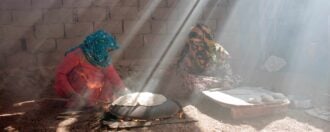
Stargazing
The hot summer months of June to August are the best time to experience clear skies and incredible stargazing in Jordan. Anywhere away from light pollution can offer good conditions at this time, but there’s nowhere quite like Wadi Rum for remote sleepouts under a bed of thick, twinkling stars.
Wadi Rum, situated far from any cities, also boasts a dry atmosphere, for some of the clearest stargazing conditions in the world. Along with the fabulous stargazing conditions there's also the chance to immerse yourself in Bedouin culture while staying at a remote camp in the middle of the desert.

Visiting the Dead Sea
The best time to visit the Dead Sea for comfortable conditions and water temperatures that range between 24°C (75.2°F) and 36°C (96.8°F), is spring (March to May) and autumn (October to November). Air temperatures at this time don’t exceed 35°C (95°F), compared to July and August that easily reach 40°C (104°F).
Soaking in these nutrient rich waters is one of the main activities in the area, but there’s much more besides. Enjoying sightseeing at Kerak Castle and Bethany beyond the Jordan or Canyoning at Wadi Mujib are also best enjoyed between the months of March to May and October to November, away from the glaring heat of summer.

Visit Wadi Rum
The best months to visit Wadi Rum are April, May and October. These months offer warm days that shouldn’t exceed 30°C (86°F) and mornings and evenings that are fresh, but not freezing, perfect for hikes. Visiting in April means a good chance to see spring flowers and May is close to optimum stargazing time.
Along with discovering the natural beauty of Wadi Rum - its orange sands and amber rock formations, this is a wonderful cultural destination too. Visiting during the moderate months of April, May and October will give you the chance to experience the bedouin culture in comfort, without battling the elements of extreme weather.
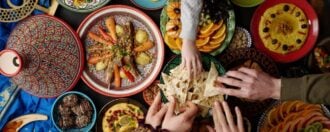
Festivals in Jordan
The best months to visit Jordan for festivals are April for Eid Al Fitr and July for Jerash Festival. Eid Al Fitr marks the end of Ramadan, celebrated with special foods, gatherings and a bustling atmosphere in markets. In July, the Jerash culture festival celebrates modern and ancient cultures with music, dance and food.
For those keen to visit the Jerash Festival in July, it’s worth remembering that this is one of the hottest months of the year. Temperatures in Jerash will easily exceed 30°C (86°F) and when visiting other parts of the country such as the Dead Sea and Petra, expect things to feel hot at 40°C (104°F).
When to Visit Petra for Sightseeing
The best time to visit Petra for cool temperatures of just 17°C (62.6°F) is March. These conditions are great for comfortable touring with an archaeologist or the strenuous climb to the High Place of Sacrifice. March typically receives a lower footfall in terms of visitor, meaning access to more exclusive experiences.
It’s worth noting Petra can be visited at any time of the year, so long as you’re prepared for the conditions; heat, cold or crowds. Petra itself, along with Amman is slightly elevated, so avoids some of the intense heat found in lower lying areas. That being said, July is the hottest month to visit Petra with temperatures reaching 40°C (104°F).


